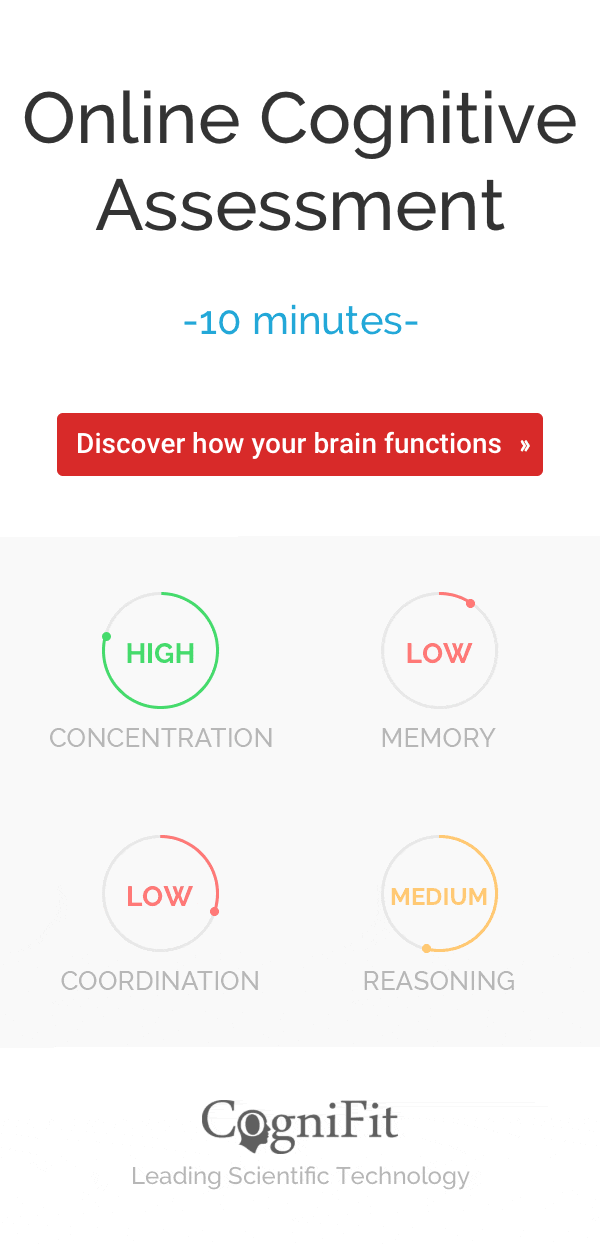
Why is Everyone so Awful? – You Might Just Need Compassion Meditation
Introduction: Do We Really Need to Meditate on Compassion?
Everyone is awful! Right? It is THEY who should feel compassion for us, not the other way around! Right? Life is peppered with suffering and pain, and the world is jam packed with all kinds of nasty people. Human suffering is just a reality we all have to face in everyday life.

Positive emotions are fleeting, and suffering is ubiquitous. Each moment is marked with pain. Well, it sure can feel that way. But can you imagine a way to bring peace and well being into your life? I can imagine it too, but is it real?
Wise and holy people have thought for centuries that one of the solutions to suffering is compassion. From Positive Psychology to Christianity and Taoism, compassion is key to well being and an important way to bring peace and loving kindness to the world.
“Compassion is not a luxury, it is a necessity for human survival and flourishing. When we extend kindness and understanding to others, we not only alleviate their suffering and pain but also ignite a profound sense of purpose and fulfillment within ourselves.”
Martin Seligman (Positive Psychology Pioneer)
From the teachings of Christ, who implored us to “Be kind and compassionate to one another, forgiving each other, just as in Christ God forgave you” (Ephesians 4:32), to the Eastern spiritual traditions that echo Arthur Schopenhauer’s sentiment that “Compassion is the basis of all morality,” the value of compassion is universally recognized across cultures and religions.

Yet, as we navigate through the tumultuous terrain of our times, it’s easy to lose sight of this fundamental truth. The title of this article, “Everyone is Awful – Why You Need Compassion Meditation”, may resonate with many who experience the same pain and the frustration of living in a world seemingly at odds with itself. Polarization has become the common narrative, compelling us to take sides and fostering animosity towards those with differing views.
However, beneath this façade of division, it’s crucial to remember that people are just people, each carrying their own set of beliefs, experiences, and fears. It’s in these moments of friction that the practice of compassion meditation becomes not just beneficial, but essential.
So, let’s delve into this ancient practice and meditation exercise that holds the potential to bridge divides, heal hurts, and remind us of our shared humanity.

Understanding Compassion and Its Importance
At its core, compassion is the empathetic awareness of another’s suffering, coupled with a sincere wish to alleviate it. This powerful emotion serves as a unifying thread that binds us all together, fostering tolerance and understanding in our daily interactions.
The significance of compassion doesn’t stop at our social lives; it’s a crucial component of mental wellbeing. A deficiency of compassion can aggravate existing mental health conditions, such as anxiety. The philosopher Friedrich Nietzsche wisely advised, “battle not with monsters, lest ye become a monster.” This poignant statement highlights the dangers of letting antagonism and resentment grow unchecked, potentially leading us down a destructive spiral of negativity, pain and suffering.

In contrast, the Stoic philosopher Seneca once wrote, “There is no more stupefying thing than anger, nothing more bent on its own strength.” This profound insight underscores the futility of holding onto anger. Instead of serving any constructive purpose, it slowly erodes our inner peace and begins to define our identity with suffering instead of peace.
“Battle not with monsters lest ye become a monster”
Nietzsche
This brings us to the concept of ‘self-compassion’, a crucial yet often neglected facet of compassion. In essence, all forms of compassion are self-compassion. By showing kindness and understanding towards ourselves, particularly during times of hardship or failure, we have the potential to break free from the negative cycle of resentment and grudges.
Self-compassion doesn’t just cultivate a healthier relationship with ourselves, it also nurtures wisdom. As we learn to meet our own struggles and care for our own heart with kindness rather than harsh self-criticism, we gain a deeper appreciation of our humanity, our own life and by extension, the humanity of others.
In this way, compassion, whether directed at ourselves or others, acts as a beacon of hope, leading us out of the shadows of resentment and into the light of empathy and inner peace.
Demystifying Compassion Meditation
Compassion meditation is a mindfulness practice designed to cultivate and enhance feelings of compassion towards oneself and others. It’s a technique that helps us develop empathy, understanding, and ultimately, loving-kindness for all beings.
Unlike other forms of meditation that focus primarily on achieving a state of calm or mindfulness, compassion meditation has a specific aim: to foster a deep sense of compassion. While mindfulness meditation encourages us to observe our thoughts and feelings without judgment, compassion meditation pushes us one step further. It urges us to actively transform our mindset, replacing negative emotions with feelings of love and kindness.

One popular form of compassion meditation is ‘loving-kindness meditation’, which plays a crucial role in cultivating compassion. This practice involves silently repeating phrases of goodwill towards oneself and others, fostering a sense of universal love and acceptance.
The method of performing compassion meditation can vary across different traditions. In Eastern practices, the meditator begins by wishing well for a loved one, sitting mindfully and observing any resistance that arises.
“In the quietude of compassion meditation, we come to understand that our well-being is intimately tied to the well-being of all living beings.”
Thich Nhat Hanh
Gradually, the practice expands to include individuals who are neutral – those we neither love nor dislike – and ultimately, to individuals we find challenging to love. Throughout this process, mindfulness is employed to identify and potentially uproot non-compassionate thoughts.

Christian practices, on the other hand, often involve prayer. The practitioner may pray for another person, asking God to forgive them and save them from eternal damnation. Simultaneously, they ask for forgiveness for harboring feelings of resentment or hatred towards that individual.
Regardless of the specific tradition, the goal of compassion meditation remains the same: to cultivate compassion. With regular practice, it enables us to replace feelings of resentment and indifference with understanding and empathy, promoting a healthier relationship with ourselves and the world around us.
The Science Behind Compassion Meditation
It is not just a spiritual practice; but a tool backed by science, with research suggesting tangible benefits for mental health. These benefits are derived from the way this meditation affects the brain and our emotional responses.
Activation of Empathy Centers
Engaging in this kind of meditation activates the empathy centers in the brain, including the anterior insula and anterior cingulate cortex. This activation often leads to more positive interpretations of ambiguous social cues and enhances the ability to focus on positive traits and intentions in others.

Stress Reduction and Reward System Activation
As we engage in compassion meditation, stress levels reduce due to the activation of the parasympathetic nervous system, promoting relaxation. Simultaneously, the brain’s reward system is activated, leading to feelings of contentment and happiness.
Enhanced Emotional Regulation and Brain Plasticity
Regular practice of compassion meditation can enhance emotional regulation, helping individuals manage intense emotions more effectively. It also promotes brain plasticity, enabling the brain to adapt and change in response to experiences.
These neurological changes induced by compassion meditation can be particularly useful for addressing various mental disorders, such as post-traumatic stress disorder (PTSD), ADHD, anxiety disorders, and depression.
PTSD
Developing self-compassion and engaging in compassionate behaviors can aid in processing traumatic memories and reducing the distress associated with them. Compassion-focused interventions can help individuals learn to manage intense emotions and build more stable, supportive relationships.

ADHD
Given that ADHD and other similar disorders involve difficulties with emotional regulation, compassion meditation can be a useful tool. By cultivating a more compassionate mindset, individuals with ADHD can better manage their emotional responses and improve their focus.
Anxiety Disorders
For individuals struggling with anxiety disorders, a body of research suggests that compassion meditation can be a significant aid. By promoting relaxation and reducing physiological arousal associated with stress, compassion meditation can help manage anxiety.
Furthermore, Compassion-focused therapy (CFT) specifically targets self-criticism and promotes self-compassion, making it an effective approach for those suffering from anxiety disorders.
Depression
Compassion plays a crucial role in counteracting negative self-perception and self-criticism, common features of depression. Through compassion meditation, individuals can cultivate a kinder, more forgiving attitude towards themselves, which can significantly alleviate symptoms of depression.
“It’s hard to be a friend to someone who’s depressed, but it is one of the kindest, noblest, and best things you will ever do.”
Stephen Fry
In summary, the science behind this classic meditation technique reveals its potential as a powerful tool for enhancing mental health. Its ability to activate empathy centers, reduce stress, enhance emotional regulation, and promote brain plasticity makes it an effective therapeutic approach for a range of mental health conditions.

Compassion Meditation: A Guided Meditation Practice
To begin your journey into compassion meditation, you first need to prepare yourself mentally and physically.
Preparation for the Meditation Practice
- Find a comfortable position: This could be sitting cross-legged, on a chair, or lying down – whichever feels most comfortable for you. Ensure your posture is upright but relaxed. This exercise is all about focus, so you don’t want to be distracted by any feeling of discomfort in the body. Feel free to repeat the intention various times.
- Set an intention: Before you begin, set an intention for your practice. This could be something like “I wish to cultivate compassion towards myself and others.” You are going to direct loving kindness towards yourself and towards others. If you are alone, you can state your intention out loud.
- Mindful breathing: Take a good deep breath to get started. Close your eyes and take a few moments to focus on your breath. After a few deep breaths you can start to focus on the sensation of the air entering and leaving your body. This will help ground you in the present moment.
The Role of ‘Loving Kindness’ in Compassion Meditation
Loving kindness meditation, or ‘metta’, is a fundamental part of compassion meditation. It involves cultivating feelings of goodwill and loving kindness towards ourselves and others, fostering a sense of interconnectedness and shared humanity between human beings.

A Step-by-Step Guide to a Basic Compassion Meditation Practice
- Begin with self-kindness: Start by directing loving-kindness towards yourself. You might use phrases like “May I be happy. May I be healthy. May I live with ease.” Repeat these phrases several times, genuinely wishing well for yourself.
- Extend compassion to loved ones:
- Next, bring to mind someone you care about deeply. You might choose a friend or a family member. Repeat the same phrases, this time directing this loving kindness towards this individual: “May you be happy. May you be healthy. May you live with ease.”
- Extend compassion to neutral individuals: Now, think about someone neutral in your life, someone you neither particularly like nor dislike. Repeat the phrases to extend the same compassion for this person. The same compassion you gave to your friends and loved ones, you now extend to those with neutral emotional connotations. These people suffer too, after all.
- Extend compassion to difficult individuals: Finally, bring to mind a person you find challenging and begin sending loving kindness to them in the same way. These people also suffer. If this feels too difficult initially, you may choose someone who mildly irritates you rather than someone who has deeply hurt you. Direct the phrases of loving-kindness towards this person. “May you be happy. May you be healthy. May you live with ease.”
- End with universal compassion: To conclude your practice, extend your compassionate feelings outwards to all beings everywhere: “May all beings be happy. May all beings be healthy. May all beings live with ease.”
Remember, the key is to genuinely wish these things for yourself and others, creating a warm feeling of loving-kindness in your heart. Of course, feeling isn’t everything. A feeling might not be present in the very moment you perform these compassion exercises, but instead of chasing a particular feeling (which might even become a distraction), simply remember your intention. You are on the right track even if you feel that your own heart has been left unchanged.
Incorporating self-kindness into the practice is crucial. It’s important to remember that we must first be compassionate towards ourselves before we can truly extend compassion to others. Quite honestly, wishing peace to all beings in the world includes all who have ever caused suffering.
That means that expecting yourself to be engulfed in a profound feeling of love and light might not be realistic, at least at first.
A tool such as the MindFit app can guide you through this process, providing different compassion meditations. However, with practice, you can easily carry out these meditations independently, cultivating compassion wherever you go

Overcoming Objections and Misconceptions
Here, we address and dispel some common misconceptions:
Misconception 1: Compassion Meditation Is Solely About Being Nice and Avoiding Conflicts While compassion does involve kindness, it doesn’t mean avoiding conflicts. Instead, it’s about approaching disagreements with understanding and empathy, fostering more meaningful and constructive conversations.
Misconception 2: Practicing Compassion Is a Sign of Weakness or Passivity Contrarily, compassion requires strength and courage. It involves acknowledging suffering – in oneself our own life and that of others – and taking steps to alleviate it.
Misconception 3: It Neglects Self-Care in Favor of Helping Others In fact, self-compassion is a critical part of the process. Before we can genuinely extend compassion to others, we must first cultivate it within ourselves. Understanding your own suffering is a way for you to understand the suffering of every other person. When your compassionate heart opens, you don’t keep it all to yourself.
Your heart opens also, to other lives, other sentient beings, but why should this be at your own expense? Compassion exercises require you to develop a healthy self esteem. This should never be neglected.
Misconception 4: Compassion Meditation Is a Quick Fix for Negative Emotions Compassion meditation isn’t a magic pill. It’s a practice that requires regular effort and commitment. While it can certainly help manage negative emotions, it’s not an instant solution.
Misconception 5: Compassion Meditation Is Linked Only to Specific Religious Beliefs While many religious traditions incorporate practices of compassion, compassion meditation in itself is not tied to any particular religion. It’s a secular practice accessible to anyone, regardless of their spiritual beliefs.
Misconception 6: Compassion Meditation Means Experiencing Only Positive Emotions Compassion involves acknowledging all emotions, positive and negative. It’s about responding to these emotions with kindness and understanding, rather than trying to suppress them.
Misconception 7: Compassion Meditation Always Involves Focusing on Others, Neglecting Oneself As mentioned earlier, self-compassion is integral to this practice. It’s about cultivating compassion for all beings, including oneself.
Misconception 8: Compassion Meditation Delivers Immediate Results, Transforming One’s Mindset Instantly Like any skill, cultivating compassion takes time and consistent practice. It’s a gradual process of personal growth and transformation.
Misconception 9: There’s a Single Way to Practice Compassion Meditation That Works for Everyone Just as each person is unique, the way each individual practices compassion meditation can vary. What works best for one person might not work for another.
Misconception 10: Compassion Meditation Conflicts with Personal Ambition and Goal Achievement On the contrary, compassion can enhance our personal and professional lives. It fosters better relationships, improves emotional well-being, and promotes a more balanced approach to ambition and goal achievement.
Clarifying the Difference Between Compassion Meditation and Religious Practices While compassion is a common theme in many religions, this kind of meditation as a practice is not inherently religious. It’s a mindfulness technique aimed at cultivating empathy and kindness, independent of any religious context.
Dispelling Fears About Negative Energy or Emotions It can sometimes bring up difficult emotions. However, it’s typically practiced within a framework that supports emotional regulation and well-being.
Skilled guidance from meditation teachers, therapists, or mental health professionals can be invaluable in addressing these concerns and navigating any emotional challenges that may arise during the practice. Remember, the goal of meditating for compassion isn’t to avoid negative feelings or emotions, but to respond to them with understanding and kindness.
Compassion and Self Compassion in Daily Life
Incorporating compassion meditation into your daily life can be a transformative experience, fostering increased self-esteem and decreased psychological distress. Here are some tips on how to integrate this practice into your routine:

Tips on Incorporating Compassion Meditation into Daily Life
- Set the intention to develop compassion: Understanding why you want to cultivate compassion can motivate you to stay committed to your practice.
- Start easy: Begin by focusing on people who are easier for you to love. As your compassion grows, you can gradually include more challenging individuals in your practice.
- Take it slow: If your practice becomes too intense, give yourself permission to take a break. Remember, compassion includes being kind to yourself.
- Use a guided meditation app: An app like MindFit can guide you through your practice, making it easier to maintain a regular routine.
- Consider seeking guidance from a meditation teacher: A teacher can provide valuable insights and support, helping you deepen your practice.
- Practice with a friend: Sharing your journey with a trusted friend can make the process more enjoyable and rewarding.
- Keep a journal: Documenting your experiences can help you track your progress and gain a better understanding of your emotional landscape.
- Start small: Begin with shorter sessions on a regular basis, and gradually increase their duration as your comfort with the practice grows.
- Develop an “anywhere” attitude for informal practice: You don’t always need to set aside specific time for formal meditation. Practice compassion in any setting, whether you’re commuting, cooking, or taking a break at work.
- Use affirmations: Remind yourself of your intention to cultivate compassion throughout the day. This could be a note on your phone or a screensaver on your computer.
The Role of ‘Informal Practice’ in Maintaining a Regular Meditation Practice
Informal practice involves incorporating mindfulness and compassion into your everyday activities. It’s about bringing the principles of compassion meditation into your interactions with others, your responses to challenges, and your attitude towards yourself.
Improve Self-Esteem and Decrease Psychological Distress
Self-esteem isn’t about self-aggrandizement; it’s about valuing oneself without judgment. Compassion meditation can enhance self-esteem by fostering a kinder, more forgiving attitude towards oneself.
By recognizing that all humans need forgiveness, compassion loving kindness, and love, we can let go of harsh self-judgments and embrace ourselves as we are. This shift in perspective can significantly decrease psychological distress, promoting greater peace and well-being.
Conclusion
Embarking on the journey of compassion is a courageous and rewarding endeavor. It may seem challenging at times, but remember, every step you take is a step towards a more compassionate and fulfilling life.
Don’t lose hope if progress seems slow or if you encounter obstacles along the way. The path isn’t always easy, but the benefits are profound. Not only can it enhance your relationships with others, but it can also foster a kinder, more accepting relationship with yourself.
Feel free to explore other avenues as well. Positive psychology offers many tools and strategies for enhancing well-being and fostering positive traits like compassion. If you’re spiritually inclined, you might find a prayerful approach resonates with you.
Using a guided meditation app can be a great help in maintaining a regular practice. Once again, I recommend the “MindFit” app. It offers a range of meditations designed to cultivate compassion, making it easier for you to integrate this practice into your daily life.
Remember, the journey to compassion begins with a single step. So why not take that step today? Begin your journey towards compassion, and discover the profound impact it can have on your life. You have nothing to lose and so much to gain.

Brendan C. Clarke













